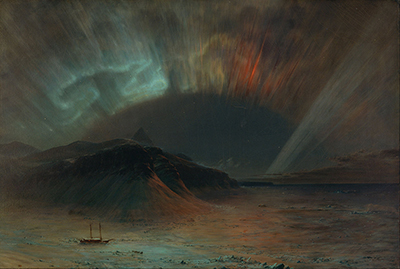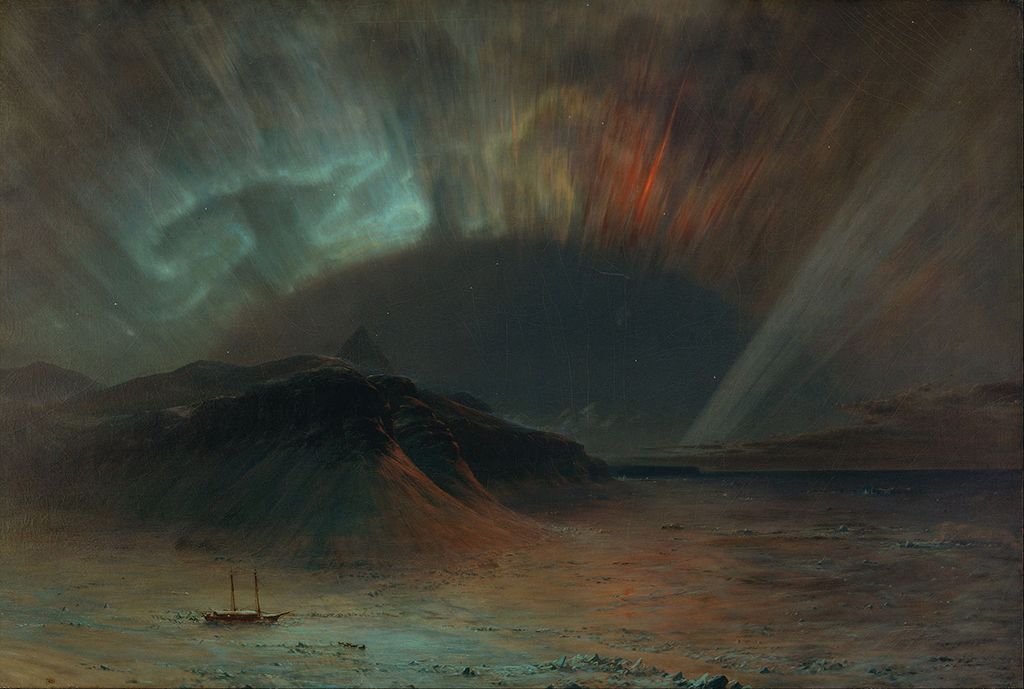 Buy Art Prints Now
Buy Art Prints Nowfrom Amazon
* As an Amazon Associate, and partner with Google Adsense and Ezoic, I earn from qualifying purchases.
Aurora Borealis by Frederic Edwin Church is an oil on canvas, dimensions 142.3 cm × 212.2 cm, created in 1865. The painting is said to be in the style Luminism and is in the landscape genre. The artwork is in the Smithsonian Art Museum in Washington, DC.
The work depicts two things, the Northern Lights or Aurora Borealis in glorious full flow, and also the expedition to Cape Leiber by Arctic explorer Isaac Hayes, whose sketches of the aurora borealis inspired Church in this work. The painting was completed in New York in 1865 and then exhibited in London with two other paintings, both of these other paintings were of volcanoes in Ecuador. Aurora Borealis was created at the same time as the end of the American Civil War, and was seen to have a political statement in it, the glory and desolation. The work of art is remarkable and must have caused a stir in its time, and the painting has a lot of aspects to it, a lot to see and consider.
The foreground is an icy sea that reflects the lights above, the sea is littered with ice, and a two-masted ship, one light visible, seeming small in the sweep of sea and land, is without sail in the lines of ice to the left of the foreground. Behind the ship, towards the central ground of the picture and to the left and towards the centre, a dark peninsula of land rises, gloomy, sheer and forbidding but reflecting the northern lights, while to the right centre, the dark sea continues to where it meets a dark and partially cloudy sky. The line of the land continues into the distance to the centre of the picture.
Above the sea and land, a dark semicircle of sky shows stars, while above and around it, the Aurora Borealis plays. It is hard to describe the Aurora Borealis, but first there is a separate beam of light diagonally right over the sky towards the viewer, which could be a lighthouse if there were any lighthouses there, but it could also be an offshoot of the Aurora Borealis. The Aurora Borealis arcs over the whole sky, with a spectrum of colours that appear to almost form symbols or figures. Light electric blue illumes the left side, with gold in the centre and an orange colour to the right.
The green colour often associated with the northern lights is pretty much absent. The light is strong above the centre and throws beams forward to the top of the picture and to the viewer. The land below catches the light and the reflected light swirls above the dark land in an effect like coloured mist. The overall effect is an eerie land, sea and skyscape, deserted apart from the ship, and cold with the icy sea and starry sky. But with an incredible light show proceeding almost without audience.




